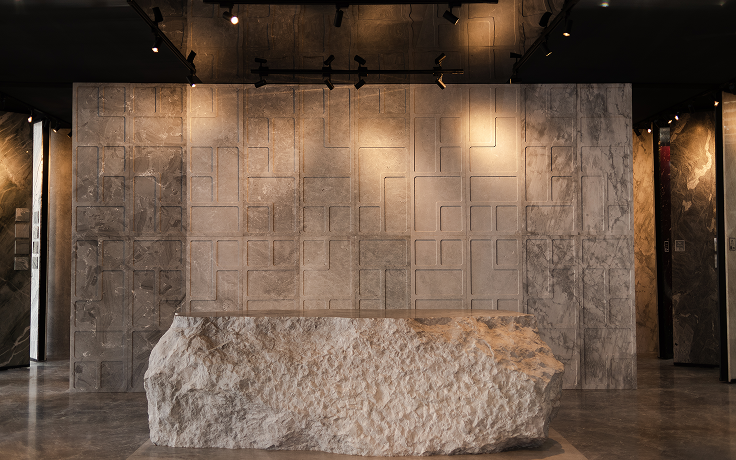How Rising Damp Can Compromise Natural Stone Flooring in Large-Scale Projects
The use of natural stone in large-scale construction, such as airports, shopping centers, and passenger terminals, is common due to its durability, sophistication, and aesthetic appeal. However, even highly resistant materials such as granite and quartzite can experience failures if not installed with proper technical care. One of the main concerns is rising damp, a phenomenon that compromises natural stone flooring.

What is Rising Damp?
Rising damp occurs when water from the substrate (such as concrete slabs or subfloors) migrates into the back of the natural stone slabs. This phenomenon, also known as capillary action, can create dark stains, efflorescence (salt deposits), detachment of slabs, and even rust in stones with metallic content.
As this moisture finds open pathways within the material, it transports mineral salts that crystallize on the surface of the stone, creating persistent stains and aesthetic changes that are difficult to remove. In more advanced cases, damage can compromise the functionality and safety of the flooring.
Main Causes of the Problem
The following factors particularly favor the occurrence of damage from rising damp:
- Installation over substrates that are still moist and have not properly cured.
- • Use of adhesives not recommended for natural stone.
- • Covering the surface with tarps or materials that block evaporation.
- • Lack of treatment on the back of the slabs.
- • Lack of proper installation practices or technical knowledge by the team.
Such conditions are often a result of pressure from accelerated construction timelines, in which finishing phases are advanced without meeting ideal conditions.

Preventive Solutions
Avoiding these types of damages is possible through simple measures starting in the planning phase:
- Pre-Installation Protection: This involves applying a water-repellent (hydrophobic) product to the back of the stone slabs, creating a barrier against substrate moisture. This step should be combined with the use of C2 S1 or C2 S2 class adhesives suitable for natural stone installation. The process is quick and ensures effective protection during the early years of use.
- Two-Component Polymer Coating: This method creates an even more robust barrier against rising damp and is highly effective when high-performance adhesives cannot be used. This option provides superior technical protection even in the most demanding conditions.
These solutions can be adapted based on the type of stone, application site, and local climate, ensuring performance and longevity.

Practical Example: New Delhi International Airpor
Terminal 3 of Indira Gandhi International Airport in India adopted effective preventive solutions against rising damp. The granite slabs used were treated with back-side impregnation and installed using the correct adhesive. After installation, an additional protective layer was applied to the surface.
Even after intense monsoon rains, the flooring remained intact, demonstrating the effectiveness of preventive measures and the value of proper technical planning.

Why is Planning Essential?
Damage caused by rising damp is, in most cases, irreversible. For this reason, prevention is more effective and economical than any corrective intervention.
Planning for protection from the initial stages of a project is fundamental to ensuring the performance, durability, and aesthetic value of natural stone flooring.
Architects, builders, and suppliers must work in synergy, treating best practices as an essential part of the construction process. By combining high-quality materials, specialized techniques, and careful planning, it is possible to avoid losses and preserve the natural beauty of Brazilian stone for many years.
To ensure the best aesthetic and functional results in large-scale projects, proper installation practices are just as important as selecting high-quality stone.

Technical highlights for natural stone projects
- Dark stains, efflorescence, and rust can indicate rising damp.
- Impregnation provides temporary protection and should be applied to the back of the slabs.
- Polymer coatings are ideal for high-performance construction environments.
- Even durable stones like granite can suffer damage without proper installation.
- Using appropriate adhesives and allowing full substrate curing are essential to avoid damage.
Conclusion
Rising damp can compromise the performance and appearance of natural stone flooring, even when high-quality materials are employed. To avoid this risk, it is essential to invest in planning and adopt best practices from the beginning of the project.
With simple and effective preventive solutions, such as water-repellent products and proper adhesives, it is possible to preserve the durability, beauty, and value of natural stones in all types of projects.
Stay informed about architecture, design, and natural stones by following the Centrorochas blog. Here, you will find technical guidance, inspiration, and expert content on Brazilian natural stones.














